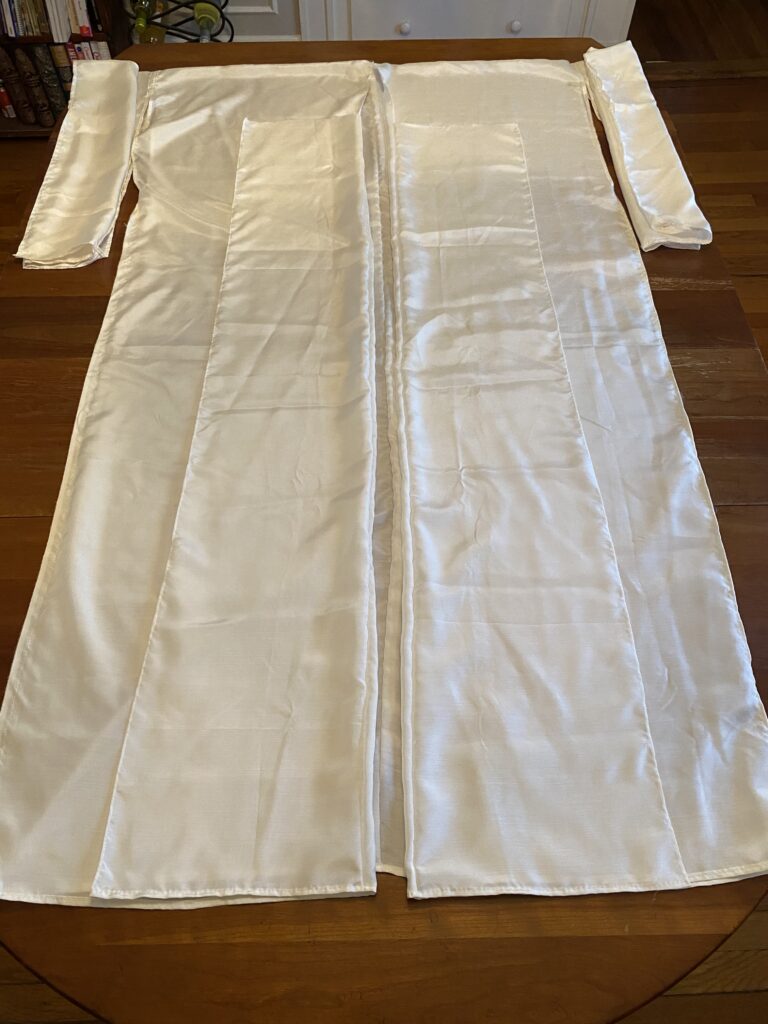Something that slowed me down a touch while hemming the sleeves – seams letting go. The start and end points of the attachment for the sode, sleeves, and the start of the side seam on both sides almost all had issues. My knots were not enough. So I reinforced those spots as I hemmed.
Lesson learned. Always give your thread ends a firm start AND finish.
On to the eri, collar.
I started by making the decision on how deep to cut the neck opening. My research gave me 19.5 (on the oversized men’s hitoe), 13.5 on the other men’s undergarment, 12.5 on the uwagi, and 11.5 for the women’s hitoe. I’m going with 11.5 cm. I don’t feel quite right about either of the men’s garments as one is oversize and the other is well, different.
I also went over the translation again to see if I had missed any helpful information on any of the source garment patterns and to double check everything before I start sewing. And I was stopped dead in my tracks.
I wrote in a previous blog the the top edge of the body and overlap panels will have this extra triangle shaped bit that gets folded up and tucked into the collar, sandwiched between two layers of fabric. What if I told you that there was only one layer of fabric?
Yeah. Made my head spin too. I’ve asked about it on the SCA Japanese facebook group, and so far, I’ve been told to do it the fold over way. I swear I asked the question clearly. I’ve attempted to clarify and uploaded source documents.
Now I’m stuck in research purgatory while I wait on someone who is more familiar with the Nuikata to weigh in.
If what I suspect is right, this really will be my lucky kosode. To make the collar work as one layer, it has to be cut on the selvage edge of the fabric, using that edge as the finished edge. I initially laid out and cut the kosode in such a way that I had a long narrow band that was selvage on one side. I planned on using it as the kake-obi, the red belt/sash worn around the shoulders. Well, it just so happens to be within a quarter inch of what I need, so that’s likely being repurposed – pending what others say. I have some off white silk taffeta I can use for the kake-obi.
I am half convinced I’m on to something that the other Japanese scholars in the SCA have missed and half convinced I’ve missed something small but vital that explains the whole thing.
Trying to do more / Though it comes in fits and starts / And yet I persist / Finally making progress – / Halted for lack of knowledge


